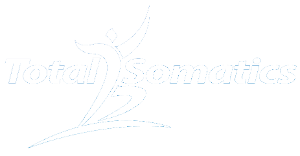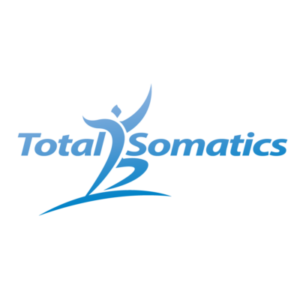How to Develop a Somatic Approach to Daily Activities
In today’s blog we are going to consider the postural reflexes which your brain will produce from stress, poor habits and injury, just to name a few. With this information, let’s consider how we can develop a mindful approach to our daily activities with this knowledge and move forward knowing how we can prevent recurring injuries and pain.
If you have joined The Total Somatics Approach to Health & Wellness Online Program at www.TotalSomatics.com, you will definitely know through the videos and support material how important posture is with our movement. If you are a regular reader of my blogs, you will have a good idea of this too. Bearing this in mind, have you found that you look at your posture and other people’s stance differently now? Have you noticed the link between their posture and personality? If you are new to the subject of Somatics you may ask, Why would this have any relation?
In previous blogs I have mentioned that without motor and sensory neurons within our muscles taking commands from our brain, our muscles would just be lumps of meat. They cannot contract and relax without input from our central nervous system. The level of tension within muscles is dictated by various factors. It can be poor postural habits, injury, stress, a history of trauma, just to name a few. The emotions of a person play into the actions of the nervous system. If a person is highly anxious, stressed, depressed or in pain, their brainstem will create subconscious postural actions, which creates tightness through the front of their body. Likewise if a person operates on nervous energy, is a type A personality and has to fit lots into their life, trying to push down the current or past emotional trauma they have endured, their brainstem response will create a distinctive posture which causes the muscles along the back of their body tighten. The third postural reflex can occur from a poor habit, such as carrying a child for a few years on one hip or after an injury and recuperating (wearing a moon boot) the person finds the brain has altered the level of tension through one side of their waist muscles, creating a hip hitch. The level of tension becomes tighter through one side of the body and creates a curvature in their back. Scoliosis is also included in this postural action.
The third postural reflex can occur from a poor habit, such as carrying a child for a few years on one hip or after an injury and recuperating (wearing a moon boot) the person finds the brain has altered the level of tension through one side of their waist muscles, creating a hip hitch. The level of tension becomes tighter through one side of the body and creates a curvature in their back. Scoliosis is also included in this postural action.
TO READ MORE ABOUT PAIN AND POSTURE, CHECK OUT THE FOLLOWING BLOGS:
The Importance of good Posture & Muscle control for exercise
How to improve Hip, Back & Knee issues
Use Somatics to reduce pain, improve posture, increase mobility and get to THE ROOT CAUSE.
How Somatics can help with Scoliosis & Back Pain
How our mindset influences the perception of pain
These postural reflexes originate from the brainstem. All actions within the brainstem happen subconsciously, such as our heart rate and breath rate. These postural reflexes are designed to help us survive and deal with stressful situations. The fight or flight stress response should create these postural changes. However within a short time, homeostasis (a state of balance) should occur within our body, allowing us to move out of the postural reflex. However due to ongoing daily demands, stresses and other factors, we can remain in these postures, which create long term musculoskeletal issues. With Somatics we are able identify these reflexes and using the process of pandiculation, we know we can stop ourselves being held captive to these postures.
Creating change with Pandiculation
Pandiculation is known as ‘active lengthening’ because it requires attention, focus and active participation. We have to be mindful throughout. Using our proprioceptive and interoceptive skills, we begin to heighten our spatial awareness, the speed and quality of our movement plus the internal or somatic awareness from within which creates physiological responses deep within our mind and body or what we refer to in somatics is our ‘soma.’
We have to slowly contract the tight muscles and release them mindfully, noticing the sensory feedback, once again developing our skills of interoception, asking ourselves, ‘how does that feel? Jerky? Shaky? Fast? Slow?’ The release phase is important because we have to notice where our comfortable length is without triggering the stretch reflex. As regular readers will know from previous blogs, when the stretch reflex is triggered, muscle cramp and spasm is experienced.
If you are already following The Total Somatics Approach to Health & Wellness Online Program at www.TotalSomatics.com, you’ll know that within a short amount of time pandiculating, you feel your brain has had a good workout! The reason for this is that so much learning is going on as we bring subconscious muscle contractions back to our conscious control. When we use pandiculation, we create change because we are improving the neural landscape of our brain by increasing connections and enhancing brain to body communication.

Putting knowledge into practice
We are all very good at knowing information, however at times following through is something that we often have to work on!
When we practice daily mindful somatic movement we discover the following benefits:
- We increase our internal awareness and read the sensory feedback from our soma
- Learn how to reduce pain from recurring injuries with pandiculation
- Identify our default postural reflex and know how to release chronically tight muscles
- Notice improvement in mobility - being able to move freely without pain and discomfort
- Improvement in posture
- Feeling calmer from the inside out because we are training our nervous system to wind down and notice how it feels to truly relax and recharge.
- Allow us to continue or resume activities we love to do.
Would you like to learn the skills and knowledge to take back control of your health and wellbeing? Would you like to learn these skills in the privacy and comfort of your own home, at a time and pace that suits you? I have created The Total Somatics Approach to Health & Wellness Online Program at www.TotalSomatics.com so you can benefit from these fantastic life skills. It is only when you start practising regular somatic movement that you realise how it truly feels to live in a body which will move freely and with less or no pain. The online program is always being updated with new information, so you will be receiving the latest information within the area of Somatic health and wellness.
To learn more about Somatics, CLICK HERE FOR MY FREE EBOOK entitled
Somatics - What is it? How can it help me?
To experience a FREE TASTER of the variety of content on offer within my online program, CLICK HERE.
Once you are within the online program, I am available via email, Skype or Zoom for further questions and support.
I look forward to teaching you these amazing skills.
Take care,
Heidi Hadley xx
www.TotalSomatics.com












